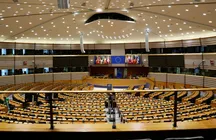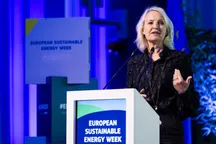 The Committee on Agriculture and Rural Development adopted on Tuesday, with 36 votes in favour, 1 contrary and 10 abstentions, the draft resolution “A Long-Term Vision for the EU's Rural Areas - Towards stronger, connected, resilient and prosperous rural areas by 2040”, stressing the key role of rural areas in EU and call for more funds and policies for their development.
The Committee on Agriculture and Rural Development adopted on Tuesday, with 36 votes in favour, 1 contrary and 10 abstentions, the draft resolution “A Long-Term Vision for the EU's Rural Areas - Towards stronger, connected, resilient and prosperous rural areas by 2040”, stressing the key role of rural areas in EU and call for more funds and policies for their development.
The nowadays problems in the rural areas
According to the European Commission’s data, in 2018 rural areas represented the 83% of the total EU area (more than 341 million of hectares), with 30.6% of the EU’s population living in rural areas. However, a lot of problems are present in these territories:
- the loss of population from remote rural areas
- lower levels of gross domestic product (GDP) per capita
- poor access to services, transports and to the next generation’s broadband (in 2020, the EU-27 share of rural households with such access was 60%, compared to an EU average of 87%)
- a gap between male and female employment rates (67% for women and 80% for men in 2019)
- only 48% of the rural population have basic digital skills, compared to 62% of EU residents in 2019
- a higher share of young people aged 15 to 29 are without and employment or an education
For these reasons, the European Commission published, on 30 June 2021, the communication “A Long-Term Vision for the EU's Rural Areas”, which contains some proposals to support stronger, connected, resilient and prosperous rural areas, as they have a key role for the development of the European Union.
What is the Long-Term Vision for the EU's Rural Areas
The European Commission's draft resolution “A Long-Term Vision for the EU's Rural Areas” set out specific proposals to implement the rural areas by 2040, establishing 5 flagship initiatives:
- Stronger rural areas: to support rural-focused research under the Horizon Europe programme for the innovation in rural communities and more education, training, youth and sport activities
- Connected rural areas: to reach an EU target of 100% access to fast broadband internet in rural areas by 2025, the digitalisation of agriculture and the improvement of mobility solutions
- Resilient rural areas: to support the renovation of buildings and renewable energy production through EU funds and initiative, such as the New European Bauhaus and EU cohesion policy, to support climate actions through carbon farming and equal opportunities for children, women and disabled
- Prosperous rural areas: to promote small and medium-sized enterprises (SMEs) and the commercialisation of products with geographical indications and to allow people joining EU programmes such as Erasmus+ and the European Solidarity Corps
- Implement Rural Action Plan and governance: to deploy a 'rural pact' to mobilise public authorities and stakeholders to respond to the aspirations of rural communities, to establish a rural observatory through a European Commission research group in order to improve data collection and analysis on rural areas, and to deploy a toolkit, functioning as a guide to identify the various funding opportunities available for rural areas.
What asked the Agriculture MEPs voting on Tuesday
The crises related to Covid-19 and the Russian war in Ukraine have further worsened the condition of rural areas in the EU. For this reason, voting the draft resolution “A Long-Term Vision for the EU's Rural Areas”, Agriculture MEPs asked specifically the Commission to:
- raise public investments to ensure equal access to the services in rural regions and for an inclusive infrastructure planning regarding both transportation and broadband coverage
- launch a study on the possibility of earmarking a share of the European Regional Development Fund and the Cohesion Fund to rural areas.
- develop a mechanism to assess and monitor the contribution each EU fund makes to rural areas
- deploy effective rural proofing mechanism at both European and national level to assess the impact of new policies on rural areas
- implement a rural territorial dimension during the current multiannual financial framework programmes
- involve local actors in the implementation of bottom-up policies for rural areas, as they can best identify the needs of each territory
- ensure that the CAP national strategic plans take account of the vision
- create a cooperation with national, regional, and local government.
Before its final approval, the draft resolution will be put to a plenary vote firstly by the European Parliament (possibly during the December session) and then by the Council of the European Union.








